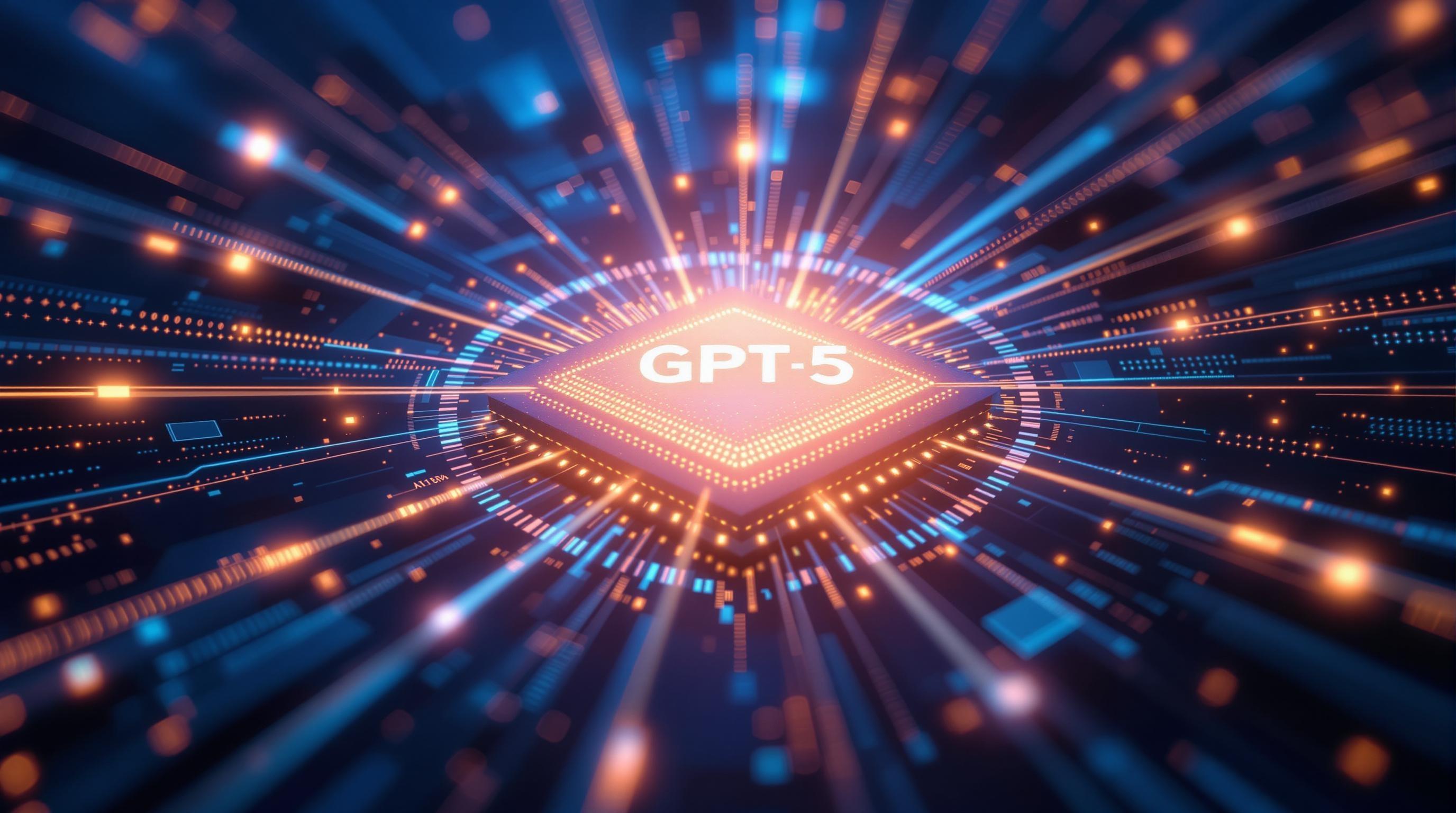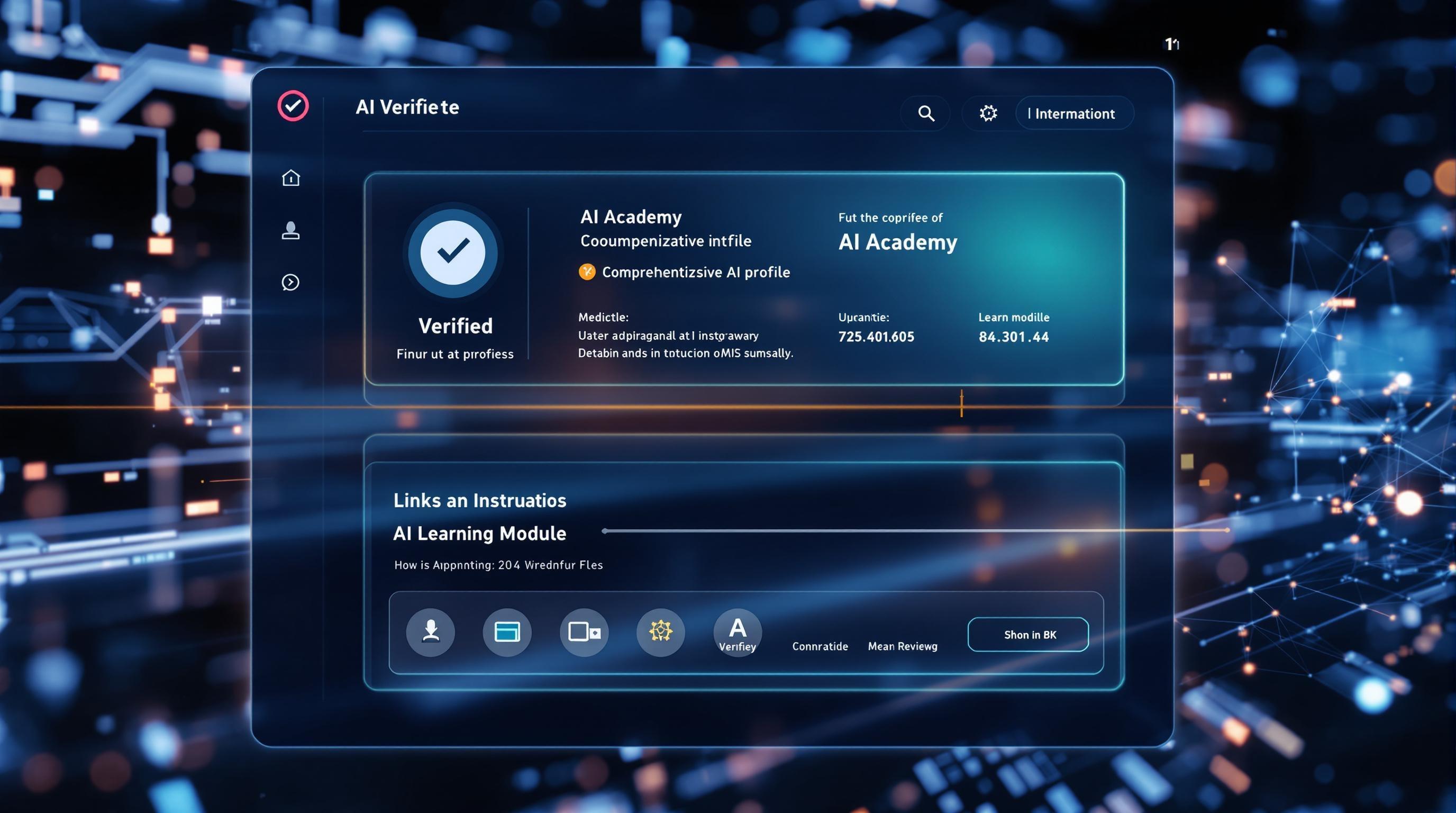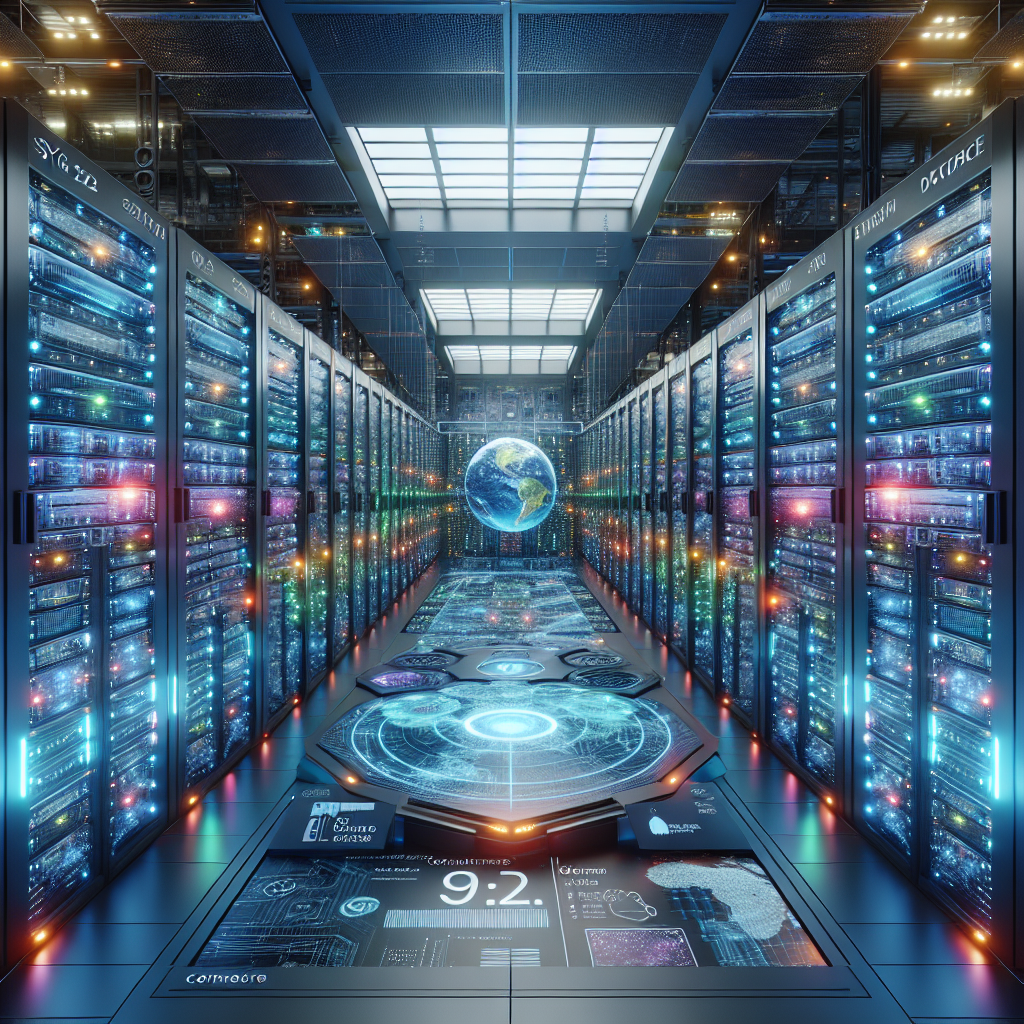AI Revolution August 2025: GPT-5, Claude 4.1, Genie 3, and the Quantum Leap

Explore the cutting-edge of AI with our breakdown of agentic AI, world models, and SWE benchmarks, revealing how AI is becoming more autonomous, understanding the world, and mastering code. Discover the potential of AI agents in revolutionizing industries and improving your workflow, and then leverage platforms like TensorFlow or GitHub Copilot to experiment with building your own world model.
OpenAI Unleashes GPT-5: A New Era of AI Reasoning
The moment the AI world has been anticipating has finally arrived: OpenAI has officially released GPT-5 to the public. This marks a significant leap forward in artificial intelligence, promising to redefine what's possible with large language models (LLMs). For those familiar with its predecessor, GPT-4o, prepare for a substantially enhanced experience. GPT-5 isn't just an incremental upgrade; it represents a paradigm shift in AI capabilities.
Blazing-Fast Responses and Superior Reasoning
One of the most immediately noticeable improvements in GPT-5 is its speed. Responses are significantly faster compared to GPT-4o, making interactions feel more fluid and natural. But the enhancements go far beyond just speed; GPT-5 boasts vastly improved reasoning capabilities. This means it can handle more complex tasks, understand nuances in language, and generate more coherent and insightful responses. Imagine having a conversation where the AI truly understands the context and implications of your queries – that's the power of GPT-5's advanced reasoning.
A Significant Reduction in AI "Hallucinations"
AI "hallucinations," where the model confidently presents incorrect or nonsensical information, have been a persistent challenge in the field. OpenAI has made significant strides in addressing this issue with GPT-5. The model demonstrates an approximate 45% reduction in hallucinations compared to GPT-4o. This improvement greatly increases the reliability and trustworthiness of the information provided by GPT-5, making it a more dependable tool for critical tasks. This is a huge step in AI safety, ensuring that users can rely on the information provided.
Drastically Reduced Reasoning Errors
Beyond hallucinations, GPT-5 also shows a remarkable 80% reduction in reasoning errors. This means that the model is not only less likely to make up information but is also far better at drawing logical conclusions and avoiding mistakes in its reasoning process. This improvement is particularly crucial for tasks that require careful analysis, problem-solving, and decision-making. Think of it like this: GPT-4o might occasionally stumble when trying to solve a complex puzzle, but GPT-5 is far more likely to see the complete picture and arrive at the correct solution. For researchers and professionals, this enhanced accuracy makes GPT-5 an indispensable asset.
Microsoft Copilot Gets a Turbocharge
In a move that will undoubtedly accelerate the adoption of GPT-5, Microsoft has integrated the model into Microsoft Copilot. This integration means that millions of users will now have access to the power of GPT-5 within their everyday workflows, from writing emails and creating presentations to coding and analyzing data. The combination of Microsoft's ubiquitous productivity suite and OpenAI's cutting-edge AI model is a game-changer for professionals across industries. Copilot users can expect a smoother, more intuitive, and more intelligent experience than ever before.
A More Competitive Landscape
The widespread availability of a top-tier AI model like GPT-5 will have a profound impact on the competitive landscape. As more individuals and organizations gain access to advanced AI reasoning capabilities, we can expect to see a surge of innovation and creativity across various sectors. Smaller companies and startups will have the ability to leverage GPT-5 to compete with larger, more established players. This democratization of AI power could lead to a more level playing field, fostering a more dynamic and competitive environment. It also encourages other companies to continue pushing the boundaries, as seen with DeepSeek and their recent cost breakthrough.
Revolutionizing Everyday Workflows
The true power of GPT-5 lies in its ability to transform everyday workflows. Imagine using advanced AI reasoning to:
Automate repetitive tasks: GPT-5 can handle routine tasks, freeing up valuable time for more strategic initiatives.
Generate high-quality content: From blog posts to marketing materials, GPT-5 can assist in creating compelling and engaging content.
Analyze complex data: GPT-5 can quickly identify patterns and insights in large datasets, helping to inform better decision-making.
Personalize customer experiences: GPT-5 can be used to create tailored experiences for customers, improving engagement and loyalty.
With its faster responses, improved reasoning, and reduced error rates, GPT-5 is poised to become an indispensable tool for anyone looking to leverage the power of AI.
Ultimately, the release of GPT-5 marks a pivotal moment in the AI revolution. Its enhanced capabilities and widespread availability promise to unlock new levels of productivity, innovation, and creativity across industries. As we move forward, it will be fascinating to see how individuals and organizations harness the power of GPT-5 to shape the future.

Anthropic Claude Opus 4.1: Dominating Enterprise AI with Specialized Coding Prowess
Imagine having a tireless, brilliant coder at your beck and call, ready to tackle complex software challenges with uncanny precision – that's the promise of Anthropic's latest offering. The AI landscape is shifting, and Anthropic is making waves with the release of Claude Opus 4.1, a specialized AI model designed to dominate enterprise coding and the burgeoning field of AI agents.
Claude Opus 4.1: The Enterprise Coding Champion
While many AI models strive for general intelligence, Claude Opus 4.1 is laser-focused on excelling in the domain of software engineering. This strategic decision reflects a growing recognition that specialized AI can often outperform generalist models in specific, high-value business applications. But what exactly makes Claude Opus 4.1 so special?
Record-Breaking Coding Performance: Claude Opus 4.1 boasts impressive results on the Software Engineering (SWE) benchmark, a rigorous test of coding ability. This indicates a significant leap in its capacity to generate accurate, efficient, and maintainable code.
Agent-Ready Architecture: The model is meticulously optimized for autonomous, multi-step agent workflows. In simpler terms, it's built to handle complex tasks that require breaking down a large problem into smaller, manageable steps and executing them independently. It is designed to work with tools like Zapier, the automation platform that connects different apps and services.
Reliability in Code Generation
One of the biggest hurdles in AI-assisted coding is ensuring the reliability of the generated code. No one wants an AI that produces code riddled with bugs or prone to unexpected errors. Claude Opus 4.1 addresses this challenge head-on with a strong emphasis on reliable code generation. This means:
Reduced Error Rates: Through extensive training and fine-tuning, Claude Opus 4.1 minimizes the occurrence of common coding errors, resulting in more stable and dependable software.
Improved Code Quality: The model is engineered to produce code that adheres to industry best practices, making it easier to understand, maintain, and extend over time.
Tool Usage and End-to-End Task Execution
Beyond just generating code, Claude Opus 4.1 is adept at leveraging external tools and executing entire tasks from start to finish. Think of it as a skilled programmer who knows how to use all the right libraries, APIs, and utilities to get the job done. For example, it can integrate with platforms like GitHub Copilot to enhance code completion and suggestions.
Seamless Integration: Claude Opus 4.1 can seamlessly integrate with a wide range of development tools, enabling it to perform complex operations such as testing, debugging, and deployment.
Autonomous Task Completion: The model can autonomously handle end-to-end tasks, such as building a new feature, fixing a bug, or refactoring existing code. This frees up human developers to focus on higher-level design and innovation.
The Rise of Specialized AI Models
The success of Claude Opus 4.1 underscores a fundamental shift in the AI paradigm: the move towards specialized AI models. While generalist models like ChatGPT are impressive in their breadth of knowledge and capabilities, they often lack the depth and precision required for specific business applications.
Consider this:
A general-purpose knife can handle many tasks, but a specialized scalpel is far superior for delicate surgery. Similarly, specialized AI models like Claude Opus 4.1 are designed to excel in niche areas.
The implications of this trend are profound. As businesses increasingly adopt AI, they will likely seek out specialized models that can deliver superior performance and ROI in their specific domains. This could lead to a proliferation of niche AI solutions, each tailored to a particular industry, function, or task. You can find more information about these trends in AI News.
Claude Opus 4.1 represents a significant step forward in the evolution of AI-powered coding. Its specialized design, record-breaking performance, and focus on reliability make it a compelling tool for enterprises seeking to accelerate software development and unlock new levels of productivity. As the AI landscape continues to evolve, we can expect to see even more specialized models emerge, further blurring the lines between human and artificial intelligence in the workplace.

Google DeepMind's Genie 3: Turning Video into Virtual Worlds for AI Training
Imagine stepping into a video game, not as a player, but as the architect of its reality – that's the promise of Google DeepMind's Genie 3.
Genie 3: Google DeepMind's "World Model"
Google DeepMind has unveiled Genie 3, a groundbreaking "world model" that's poised to revolutionize the way we train and test AI agents. But what exactly is a world model? Think of it as an AI's internal simulation of reality. Instead of just reacting to individual inputs, a world model allows an AI to understand the underlying rules and dynamics of an environment, predict future outcomes, and plan accordingly. It's like the difference between memorizing a map and actually understanding how to navigate a city. Genie 3 is designed to be this internal simulation, but not just for simple tasks – for complex, dynamic virtual worlds.
From 2D Video to Interactive 3D Environments
The magic of Genie 3 lies in its ability to convert standard 2D videos into fully interactive 3D environments. Imagine feeding it a video of someone playing a platformer. Genie 3 analyzes the video, identifies the characters, objects, and their interactions, and then reconstructs the scene as a fully explorable 3D world. This isn't just passive playback; users can actively navigate these recreated environments, interact with objects, and even introduce new elements to observe the resulting consequences.
Training and Testing AI Agents
Genie 3's power truly shines when it comes to training AI agents. By providing a simulated world that mirrors real-world physics and interactions, AI developers can train their agents in a risk-free, cost-effective environment. Think of it as a digital playground where AI can learn, adapt, and evolve without the constraints and expenses of physical experimentation.
Simulations Across Industries
The implications of Genie 3 are far-reaching, spanning multiple industries:
Robotics: Imagine training a robot to perform complex tasks like assembling electronics or navigating a warehouse, all within a Genie 3-generated simulation. This allows for rapid iteration and refinement of control algorithms before ever deploying a physical robot. This process could use tools like TensorFlow or PyTorch to develop these algorithms. These tools are open-source machine learning frameworks that provide a comprehensive ecosystem of tools, libraries, and community resources for building and deploying AI models.
Gaming: Game developers can use Genie 3 to prototype new game mechanics, test AI-controlled characters, or even create entire virtual worlds from existing video footage. Imagine building a sequel to your favorite game simply by providing Genie 3 with gameplay videos from the original.
AI Agent Research and Development: Genie 3 offers a standardized platform for researchers to develop and test new AI agents. This allows for direct comparison of different algorithms and approaches in a controlled environment, accelerating progress in the field of AI.
Cost Savings and Faster Iterations
The ability to simulate complex environments with Genie 3 translates to significant cost savings and faster development cycles.
Building and maintaining real-world testing environments is expensive and time-consuming. Genie 3 eliminates these barriers, allowing AI developers to iterate more quickly, experiment with new ideas, and ultimately build more robust and capable AI systems. With the rise of AI tools, you can stay informed about the latest advancements by reading AI News to discover more innovations and real-world applications.
Genie 3 represents a significant leap forward in the quest to create truly intelligent and adaptable AI. By bridging the gap between the virtual and real worlds, it empowers researchers and developers to unlock the full potential of artificial intelligence.

Rigetti's Quantum Leap: 99.5% Fidelity Paves the Way for Advanced AI
Imagine a world where complex problems that currently take supercomputers years to solve are tackled in mere hours – that's the promise of quantum computing, and recent breakthroughs are bringing us closer to that reality. A pivotal development in this realm is Rigetti's achievement of 99.5% quantum fidelity, a milestone that could drastically reshape the landscape of AI and beyond.
A Quantum Leap in Fidelity
Rigetti Computing recently announced a significant reduction in 2-qubit gate errors, achieving an impressive 99.5% fidelity on their 36-qubit system. This isn't just a minor improvement; it's a monumental leap forward in quantum computing. To understand why this matters, let's break down what 2-qubit gate fidelity actually means.
2-qubit gate fidelity refers to the accuracy with which a quantum gate (the basic building block of a quantum computation) can manipulate two qubits (quantum bits) simultaneously. In simpler terms, it measures how reliably we can perform operations on two qubits that are entangled, which is essential for quantum algorithms. The higher the fidelity, the less noise and errors creep into the calculation, leading to more accurate results. Think of it like tuning a radio – the higher the fidelity, the clearer the signal and the less static you hear. In quantum computing, this "static" can corrupt the computation, making high fidelity crucial.
Unlocking Deeper Circuits
So, how does this improved quantum fidelity translate to tangible benefits? It all boils down to feasible circuit depth. Every quantum algorithm can be represented as a circuit, a series of quantum gates applied to qubits. However, each gate operation introduces a small amount of error. With lower fidelity, these errors accumulate quickly, limiting the complexity (or depth) of the circuits we can reliably execute.
A higher fidelity allows for significantly deeper and more complex quantum circuits, meaning quantum computers can tackle more intricate and real-world problems.
With a fidelity of 99.5%, the error rate is reduced dramatically, allowing for significantly extended feasible circuit depth. This is akin to building a taller skyscraper – a more stable foundation (higher fidelity) allows you to add more floors (deeper circuits) without the whole structure collapsing. This progress opens doors to more advanced quantum algorithms and applications.
Accelerating AI with Quantum
The implications of this breakthrough extend far beyond theoretical quantum mechanics. Quantum computing holds immense promise for accelerating various AI and optimization workloads. For example:
Drug Discovery: Simulating molecular interactions to design new drugs and therapies. This could revolutionize the pharmaceutical industry, bringing life-saving treatments to market faster. Tools such as DeepMind AlphaFold, which uses AI to predict protein structures, could be further enhanced by quantum computing. DeepMind AlphaFold is an AI system developed by Google's DeepMind that predicts the 3D structure of a protein from its amino acid sequence. This has important applications in drug discovery.
Materials Science: Discovering novel materials with specific properties, such as superconductivity or enhanced strength. Imagine designing materials atom-by-atom, unlocking possibilities previously confined to science fiction.
Financial Modeling: Optimizing investment portfolios and managing risk with unprecedented accuracy. Quantum algorithms can analyze vast datasets and identify patterns that are invisible to classical computers.
Machine Learning: Training complex AI models faster and more efficiently. This could lead to breakthroughs in areas like image recognition, natural language processing, and robotics. Consider tools like TensorFlow, an open-source machine learning framework, which could benefit from the computational power of quantum computers. TensorFlow is a free and open-source software library for machine learning and artificial intelligence.
The Road to 100+ Qubits
Rigetti's achievement is also a crucial step towards building larger, more powerful quantum computers. The industry is racing towards creating machines with 100+ qubits, a threshold believed to be necessary for achieving "quantum advantage" – the point where quantum computers can outperform the best classical computers on certain tasks. As quantum fidelity improves, the challenges of scaling up the number of qubits become more manageable. This progress signals that we're not just incrementally improving quantum technology; we're on the cusp of potentially exponential advancements. These advancements could lead to a true AI Revolution, which you can follow in AI News.
Rigetti's breakthrough represents a significant stride in the quest to harness the power of quantum computing for AI and other transformative applications. As fidelity continues to improve and qubit counts increase, the potential for quantum-enhanced AI becomes ever more tantalizing, promising to unlock solutions to some of humanity's most pressing challenges. The future of AI may very well be intertwined with the ongoing quantum revolution.

xAI's Grok 4 Goes Free: Igniting the AI Price Wars
The gloves are off, and the AI arena is heating up as xAI drops a bombshell: Grok 4 is now free for all registered users, signaling a bold move in the escalating AI price wars. This decision could reshape the competitive landscape and democratize access to cutting-edge AI technology, but what does it really mean for users and the industry as a whole?
Grok 4: Free, Functional, and Feisty
At its core, Grok 4 offers users a potent blend of functionality and real-time awareness. Unlike some AI models that rely on pre-packaged datasets, Grok 4 boasts native tools that allow it to access and process current information, giving it a significant edge in providing up-to-date insights and answers. This real-time search capability means you're not just getting regurgitated information; you're getting insights informed by the very latest data available. Think of it as having a super-informed research assistant at your beck and call, ready to dive into the depths of the internet to find the answers you need.
But Grok 4 isn't just about data; it's also about personality. One of the defining characteristics of Grok 4 is its distinctive "spicier" tone. In a world of increasingly homogenized AI outputs, Grok dares to be different, offering responses that are more conversational, engaging, and even a little bit cheeky. This willingness to inject personality into its interactions sets it apart from more buttoned-down AI models, making it a potentially more appealing option for users who want an AI companion that feels less like a machine and more like a collaborator.
The Ripple Effect: Implications for Competitors
The decision by xAI to make Grok 4 free is likely to send shockwaves through the AI industry. Competitors who have been charging a premium for access to their most advanced models may now find themselves under pressure to lower prices or offer more generous free tiers. This could lead to a commoditization of AI capabilities, where the focus shifts from raw power to factors such as ease of use, integration with other tools, and the overall user experience. Imagine a scenario where ChatGPT, Google Gemini, and Claude are all vying for your attention not just with their AI smarts, but with their pricing, features, and even their personality.
This move by xAI is not just about gaining market share; it's about redefining the rules of the game.
Democratizing AI: A Boon for Experimentation and Adoption
Beyond the competitive implications, the free availability of Grok 4 has the potential to significantly broaden AI experimentation and adoption. By removing the financial barrier to entry, xAI is empowering individuals, startups, and organizations of all sizes to explore the possibilities of AI without breaking the bank. This could lead to a surge of innovation, as more people are able to experiment with AI and discover new and unexpected ways to apply it to their unique challenges and opportunities. It's like giving everyone a free pass to the AI playground, encouraging them to explore, experiment, and push the boundaries of what's possible.
Increased Accessibility: Anyone can now use Grok 4.
More Innovation: Lower barriers to entry means more experimentation.
Broader Adoption: Companies and individuals can integrate AI without high costs.
In conclusion, xAI's decision to make Grok 4 free is a game-changer that is likely to have far-reaching consequences for the AI industry. By combining powerful features, a distinctive personality, and a price tag of zero, Grok 4 is poised to shake up the competitive landscape and democratize access to AI technology. As the AI price wars intensify, it will be fascinating to see how other players respond and how this ultimately shapes the future of artificial intelligence. Be sure to check our AI News section for up-to-date information.

EU AI Act Bites: Shaping Global AI Standards with Transparency and Safety
The AI landscape shifted dramatically as August 2025 saw the EU AI Act officially come into effect, marking a pivotal moment in the global regulation of artificial intelligence. This legislation isn't just another set of rules; it's a game-changer that's already influencing how AI is developed and deployed worldwide. The Act’s core principle is to ensure that AI systems are developed and used in a way that protects fundamental rights, promotes innovation, and fosters trust. But what does this actually mean for the tech giants and smaller AI startups alike? Let's break it down.
The Dawn of AI Governance in Europe
The most immediate impact is the enforcement of rules for general-purpose AI models. These rules aim to address the risks associated with AI systems that can be used in a wide range of applications. Think of it like this: the EU is setting the speed limit and installing traffic lights on the AI superhighway. The key provisions focus on:
Transparency: Developers must provide detailed information about their AI models, including their capabilities, limitations, and how they were trained. This is like providing a detailed spec sheet for every AI engine under the hood.
Risk Management: Companies must assess and mitigate the risks associated with their AI systems, particularly those deemed high-risk. This includes implementing measures to prevent bias, ensure data privacy, and protect against misuse.
Data Governance: The Act sets strict standards for the data used to train AI models, ensuring that it is accurate, reliable, and respects privacy rights. This is akin to ensuring that the fuel powering these AI engines is clean and ethically sourced.
Show Me the Money (or the Fine!)
Non-compliance with the EU AI Act carries a hefty price tag. Companies that fail to meet the requirements could face fines of up to €35 million, or 6% of their global annual turnover, whichever is higher. This is not pocket change; it's a serious deterrent designed to ensure that companies take the regulations seriously. The Act also establishes a clear legal framework for redress, allowing individuals and organizations to seek compensation if they are harmed by AI systems. This robust enforcement mechanism is what gives the EU AI Act its teeth.
Voluntary Codes and the Stance of Tech Giants
In anticipation of the full implementation, the EU Commission encouraged companies to sign a voluntary code of conduct, committing to adhere to the Act's principles. Major players like Google, Microsoft, and Anthropic quickly signed on. This demonstrates a willingness, at least on the surface, to align with the EU's vision for responsible AI development. Google, for example, has been investing heavily in AI safety research and tools.
However, not everyone is on board. Meta notably declined to sign the voluntary code. The reasons behind this decision remain somewhat opaque, but it signals a potential divergence in approach between Meta and the EU regarding AI regulation. Whether this is a strategic maneuver or a fundamental disagreement remains to be seen. In any case, AI at Meta continues to develop at a rapid pace.
The
Enterprise AI Budgets Surge: From Pilot Projects to Core Infrastructure
Imagine a world where AI isn't just a buzzword, but the very backbone of how businesses operate – that's the reality taking shape right now.
The Swelling AI Purse Strings
The numbers don't lie: businesses are putting serious money behind their AI ambitions. A staggering 88% of firms are now allocating more than 5% of their total IT budget to AI initiatives. This isn't just pocket change; it's a significant shift in priorities, signaling that AI is no longer a peripheral experiment, but a central component of corporate strategy. To put it in perspective, consider a company with a $10 million IT budget. Allocating 5% to AI means a $500,000 investment – enough to fund multiple projects, hire specialized talent, and acquire the necessary infrastructure. This surge in investment reflects a growing confidence in AI's ability to deliver tangible results, from increased efficiency and reduced costs to improved customer experiences and innovative new products.
LLMs: From Lab to Launchpad
One of the key drivers behind this investment boom is the rise of Large Language Models (LLMs). We're witnessing an explosion in LLM deployments, with an increase of approximately 150% year-over-year. It's like going from dial-up to fiber optic in the blink of an eye! Businesses are recognizing the transformative potential of these models, leveraging them for a wide range of applications, such as ChatGPT, a versatile language model used for tasks like text generation and conversation, or even more specialized models like DeepSeek, known for its focus on coding and complex problem-solving. This rapid adoption is fueled by the increasing accessibility and affordability of LLMs, as well as the growing availability of pre-trained models and tools that make it easier to integrate them into existing workflows.
AI Thrives as Infrastructure Spending Cools
Interestingly, this surge in AI investment is happening even as overall infrastructure CapEx (capital expenditure) is cooling down. Traditionally, companies would invest heavily in hardware and networking infrastructure to support their IT needs. However, the rise of cloud computing and AI-as-a-Service (AIaaS) has changed the game. Businesses can now access powerful AI capabilities without having to build and maintain their own expensive infrastructure. Instead, they can allocate their resources to developing and deploying AI-powered applications that directly address their business needs. It’s like trading in a fleet of delivery trucks for a subscription to a drone delivery service – you get the same result (or better), without the upfront cost and ongoing maintenance headaches.
From Pilot Projects to Production Powerhouses
This budgetary shift reflects a larger trend: the move from AI pilot projects to full-scale production deployments. For years, many companies experimented with AI on a small scale, running proof-of-concept projects to test the waters. But now, they're seeing the potential to transform their entire operations with AI, and they're ready to go all in. This means investing in the infrastructure, talent, and processes needed to deploy AI at scale, across all areas of the business. This shift is also about moving AI out of the “IT department” and embedding it into every facet of operations, from marketing and sales to product development and customer service.
AI: The New Core of IT
Ultimately, AI is becoming a core part of IT infrastructure. It's no longer a separate layer or add-on, but an integral component of the entire IT ecosystem. This means that AI is being integrated into everything from data management and security to networking and application development. As AI becomes more deeply embedded in IT infrastructure, it will drive even greater efficiencies, innovation, and competitive advantage. Tools like Google Cloud AI and Azure Machine Learning are at the forefront, offering comprehensive platforms to build, deploy, and manage AI solutions. Just as the internet transformed business in the late 20th century, AI is poised to revolutionize the 21st, and the smart companies are already building the foundations for that future.
As AI permeates deeper into enterprise IT, the focus is now on maximizing ROI and ensuring alignment with strategic objectives.

Quick Definitions: Agentic AI, World Models, and SWE Benchmarks
The world of AI is evolving at breakneck speed, throwing around terms that can sound like futuristic jargon. Let's break down three key concepts – Agentic AI, World Models, and SWE Benchmarks – to give you a clearer picture of where we're headed.
Agentic AI: Your Autonomous Digital Assistant
Imagine an AI that doesn't just passively respond to your commands but actively works towards your goals. That's the essence of Agentic AI. Instead of just answering a single question, an agentic AI can take on a complex task, break it down into smaller steps, and execute them autonomously. Think of it as your personal AI project manager, capable of handling intricate workflows with minimal supervision. Consider using Firebase Studio, an AI tool that advances agentic AI with Gemini integration, to supercharge app development.
Key Features:
Planning: Decomposes complex tasks into manageable sub-goals.
Execution: Carries out actions in the real world (e.g., sending emails, making API calls).
Learning: Adapts and improves its performance based on past experiences.
Reasoning: Makes informed decisions and solves problems independently.
The potential impact of Agentic AI is enormous, promising to revolutionize fields ranging from customer service to scientific research. Imagine AI agents proactively managing your schedule, conducting market research, or even discovering new drug candidates.
World Models: AI's Inner Universe
At its core, a World Model is an AI's attempt to create an internal representation of the world around it. It's like building a virtual simulation within the AI's "mind", allowing it to predict the outcomes of its actions and plan accordingly. It goes beyond simply memorizing data; it's about understanding the underlying dynamics and relationships that govern the environment. Think of it as teaching an AI common sense. Just like we use our mental models to navigate the world, AI can use world models to reason, plan, and adapt to new situations. AI tools like TensorFlow provide the framework to build these sophisticated models.
Key Components:
Representation Learning: Automatically extracts relevant features from raw sensory data (e.g., images, sounds).
Causal Inference: Learns cause-and-effect relationships between events.
Predictive Modeling: Forecasts future states based on current observations and past experiences.
SWE Benchmarks: Measuring AI's Coding Prowess
As AI models become increasingly adept at generating code, it's crucial to have standardized ways to evaluate their performance. That's where SWE (Software Engineering) Benchmarks come in. These benchmarks consist of coding challenges designed to test an AI's ability to write, debug, and understand code. They provide a quantitative measure of an AI's coding skills, allowing researchers to track progress and compare different models. Consider using GitHub Copilot, an AI pair programmer that uses these benchmarks to improve code generation.
Common Benchmarks:
HumanEval: Tests code generation from docstrings.
MBPP (Mostly Basic Programming Problems): Evaluates the ability to solve simple programming tasks.
DS-1000: Focuses on data science tasks, such as data manipulation and analysis.
SWE Benchmarks are essential for driving progress in AI-assisted software development. By providing a clear and objective measure of performance, they encourage researchers to develop more capable and reliable coding tools.
Understanding these key definitions – Agentic AI, World Models, and SWE Benchmarks – is crucial for navigating the rapidly evolving landscape of artificial intelligence. As AI continues to advance, these concepts will play an increasingly important role in shaping the future of technology and society. We can look to resources such as the AI glossary at best-ai-tools.org/learn/glossary for a deeper dive into these and other AI concepts.
🎧 Listen to the Podcast
Hear us discuss this topic in more detail on our latest podcast episode: https://open.spotify.com/episode/5AMZdp88rVBMnoLEE5e9D3?si=qWnauFHNQpGNzaLmjAbi_w
Keywords: GPT-5, OpenAI GPT-5 release, Anthropic Claude Opus 4.1, Google DeepMind Genie 3, AI model, Quantum Computing Fidelity, xAI Grok 4 Free, EU AI Act Compliance, Enterprise AI Spending, Agentic AI, World Models in AI, Software Engineering Benchmarks AI, AI Hallucination Reduction, AI Reasoning Improvement, AI in Robotics and Gaming
Hashtags: #AI #GPT5 #AINews #QuantumComputing #EnterpriseAI
For more AI insights and tool reviews, visit our website https://best-ai-tools.org, and follow us on our social media channels!
Website: https://best-ai-tools.org
X (Twitter): https://x.com/bitautor36935
Instagram: https://www.instagram.com/bestaitoolsorg
Telegram: https://t.me/BestAIToolsCommunity
Medium: https://medium.com/@bitautor.de
Spotify: https://creators.spotify.com/pod/profile/bestaitools
Facebook: https://www.facebook.com/profile.php?id=61577063078524
YouTube: https://www.youtube.com/@BitAutor
Recommended AI tools
Sora
Video Generation
Create stunning, realistic videos and audio from text, images, or video—remix and collaborate with Sora, OpenAI’s advanced generative video app.
Perplexity
Search & Discovery
Clear answers from reliable sources, powered by AI.
DeepSeek
Conversational AI
Efficient open-weight AI models for advanced reasoning and research
Freepik AI Image Generator
Image Generation
Generate on-brand AI images from text, sketches, or photos—fast, realistic, and ready for commercial use.
Windsurf (ex Codium)
Code Assistance
Tomorrow’s editor, today. The first agent-powered IDE built for developer flow.
Canva Magic Studio
Design
All the AI magic of Canva, in one place.


